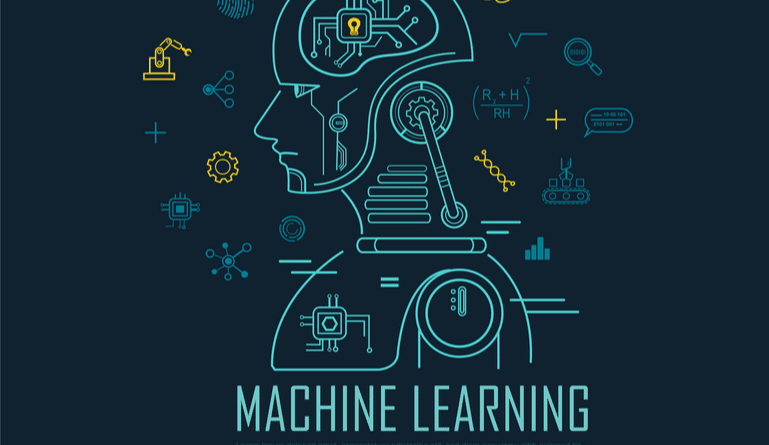Do you know that 82% of marketing experts are using AI and machine learning to enhance all aspects of their customization techniques? In this article, we will be expounding on all you need to know about ML. Enjoy!
What is Machine Learning
Machine learning is a discipline of Artificial Intelligence which focuses on developing applications that increase their accuracy and learn from experience over time, without any human programming instructing them to do so. Machine learning applications learn from data so as to enhance their predictive accuracy or decision-making over time.
In ML, algorithms are ‘taught’ how to identify features and patterns in huge amounts of data so as to arrive at predictions and decisions based on new data. The quality of the algorithm will determine how much more accurate the predictions and decisions will become as it analyses additional data.
How does Machine Learning Work?
There are basically 4 steps in developing a ML model or application. They are:
Step 1: Choose and arrange your training data set
Teaching data is a data set representative of the information to be ingested by the machine learning application to solve the challenge is built to fixed. In certain situations, the teaching data is labeled data – designed to select classifications and features that the model will have to recognize. Other data sets are unlabeled; thus the model will have go remove those characteristics and allocate categorizations on its own.
Nonetheless, the teaching data must be adequately prepared and scanned for anomalies or falsities that could affect the training. It should be categorized into 2 subsets: the teaching subset, which will be utilised to teach the model, and the analysis subset, used to evaluate and enhance it.
Step 2: Select an algorithm to operate on the teaching data set
The type of algorithm is determined by the type (whether labeled or unlabeled), the quantity of data in the teaching data, and the kind of problem to be fixed. Below are the common types of ML algorithms to be utilised when labeled data:
- Recession algorithms (such as linear and logistic regression, as well as a support vector machine).
- Decision trees
- Instance-based algorithms
- Unlabeled data uses the following algorithms:
- Clustering algorithms
- Association algorithms
- Neural networks
Step 3: Teaching the algorithm to build the application
Teaching the algorithm is a crucial process, involving operating variables via the algorithm, making comparison between the output and the outcomes it should have produced, adjusting biases and weights within the algorithm which might generate a more accurate outcome, and testing the variables again till the algorithm delivers the desired outcome most of the time. The eventual trained, precise algorithm is the machine learning application.
Step 4: Utilizing and refining the application
The last step is using the application with fresh data so that it can increase effectiveness and accuracy over time. The source of the new data will be determined by the problem being solved. For instance, machine learning applications built to detect spam will ingest email messages, but a ML application that runs a robot vacuum cleaner will use data generated from real-world interaction with new objects or moved furniture in the room
Why is Machine Learning important
Due to factors such as increasing varieties and volumes of available data, affordable data storage, and computational processing that is more powerful and cheaper – there has been a resurging interest in machine learning.
All these factors make it possible to automatically and quickly create applications that can process larger, more sophisticated data and yield swifter, more accurate outcomes – even on a much bigger scale. And by developing accurate applications, a company is better positioned to identify lucrative opportunities and/or avoid hidden risks.
Uses of Machine Learning
As earlier mentioned, machine learning is ubiquitous. Below are some use cases that you might experience everyday:
- Financial Services
Many businesses in the financial and banking industry utilize ML for 2 main purposes: to identify key insights in data and prevent fraudulent acts. These important insights help to recognize lucrative investment opportunities, or assist investors know the best time to trade. Data mining also helps to use cybersurveillance to indicate warning signs of cyber fraud or identify high-risk profile clients.
- Government
Government institutions like utilities and public safety have a specific need for ML because they have numerous data sources that can be mined to get insights. For example, analysing sensor data presents methods of increasing efficiency and saving money. The government can also use ML to detect fraud and reduce identify theft.
- Health care
The healthcare sector is not left out in the fast-growing trend of ML. The industry now uses wearable sensors and devices that can utilise data to examine the health of a patient in real-time. Machine learning can also lead to the advent of technology that will assist medical specialists evaluate data to detect red flags or patterns that might lead to better treatment or diagnoses.
- Oil and gas
The volume of ML use cases in this sector is vast. From discovering new energy sources, examining minerals under the earth, forecasting refinery sensors malfunction, to streamlining oil distribution so as to make it cost-effective and more efficient – the use cases are many and still expanding.
Machine Learning applications
Machine learning algorithms are employed in cases where the solution is needed to promote post-deployment improvement. The application of ML algorithms and models are versatile and can be utilised as an alternative to average-skilled human effort under the appropriate conditions. For instance, natural language processing machine language called chatbots have already replaced customer service administrators in big B2C companies. These chatbots have the ability to evaluate customer queries and offer support for human customer assistance administrators or interact directly with the customers.
In addition, ML algorithms are applied to help enhance customization and user experience for online platforms. Amazon, Google, Netflix, and Facebook all utilise recommendation systems to eliminate content glut and deliver personalized content to each user based on their things they like and dislike.
Types of Machine Learning
-
Supervised learning algorithms
These types are taught with the use of labeled examples. Supervised learning uses ML techniques, such as prediction, regression and classification, to identify patterns that predict the values of the label on extra unlabeled data. Supervised learning is typically used in systems where past data forecasts possible future contingencies.
-
Unsupervised learning algorithms
These types are utilised against data with no past labels. The application is not given the “right answer”. It must determine what is being displayed by itself. The aim is to explore the data and identify some pattern within. This type, works excellently on transactional data.
-
Reinforcement learning algorithms
This type is usually used for navigation, gaming, and robotics. Through trial and error, it allows the algorithm to discover which actions produce the highest rewards. Reinforcement learning has 3 major components: the agent (decision Malay or learner), the environment (anything the agent communicates with), and actions (the capability of the agent – what it can do).
Machine Learning techniques
There are about 10 machine learning techniques and they a provide an overview – and the building block upon which you can continue building as you home your ML skills and knowledge. They are:
- Regression
- Classification
- Clustering
- Dimensionality Reduction
- Ensemble Methods
- Neural networks and deep learning
- Transfer learning
- Reinforcement learning
- Natural language processing
- Word embedding
(Also Read: List of Machine Learning Algorithms Experts Should Know)
Machine Learning examples
In this highly modernized world, there are several examples of ML all around us. Some of the most common examples include:
- Spam detectors to block unwanted emails from entering our inboxes
- Robots vacuuming the floor while we spend our time on something better
- Websites suggest songs, movies and products based on what we listened to, watched, or purchased before.
- Digital assistants search the internet, in response to our commands, and play songs.
- Medical image evaluation systems assist doctors to detect tumors they did not notice.
- The first autonomous-vehicles are hitting the road.
Advantages of Machine Learning
- Digital assistants: Google Assistant, Amazon Alexa, Apple Siri, and other NLP-powered digital assistants help to drive speech recognition and speech-to-text software.
- Recommendations: ML drives personalized recommendations offered by Spotify, Netflix, Amazon and other job search, entertainment, travel, news, and retail services.
Other benefits are:
- Fraud detection
- Chatbots
- Cybersecurity
- Medical image analysis
- Self-driving cars
- Contextual online advertising
(Also Read: Benefits of Machine Learning in Business CMOs Should Know)
Machine Learning Challenges
Below are some challenges facing by experts today:
- Data collection
- Not enough amount of training data
- Non-representative training data
- Poor data quality
- Unnecessary features in the ML model
- Offline training and implementation of the model
- Affordability
- Time-consuming deployment
- Data security and inaccessible data
- Infrastructural needs for testing and experimentation
Future of Machine Learning
The future of machine learning is without doubts very bright. It has been forecasted that several biometrics will be integrated with ML to achieve a comprehensive security solution. Thanks to the advancements in Artificial Intelligence technology, multimodal biometric recognition will soon be achieved in the nearest future.
Machine Learning Trends
-
AI-driven Biometric Security Solutions
Biometric verification has witnessed significant advancements. It is an emerging machine learning trend you should watch out for. An example of biometrics machine learning applications is Amazon’s Alexa. The software can now differentiate the voices of different speakers by comparing who is speaking to a predetermined voice profile.
-
Conversational AI
All through 2019 and 2020, AI has advanced to a level where it is now able to compete with human cognition in terms of day-to-day activities like writing. For example, researchers at OpenAI report that their AI-based text creator can create realistic articles, poems and stories.
Other machine learning trends are:
- Explainable AI
- AI in combating COVID-19
- AI analysis in business predictions
- Automated machine learning
Final Thoughts
In conclusion, it is necessary to understand how to combine the best algorithms with the right processes and tools to get maximum value from. Businesses across several industries have a lot to gain by deploying ML in their business processes.






